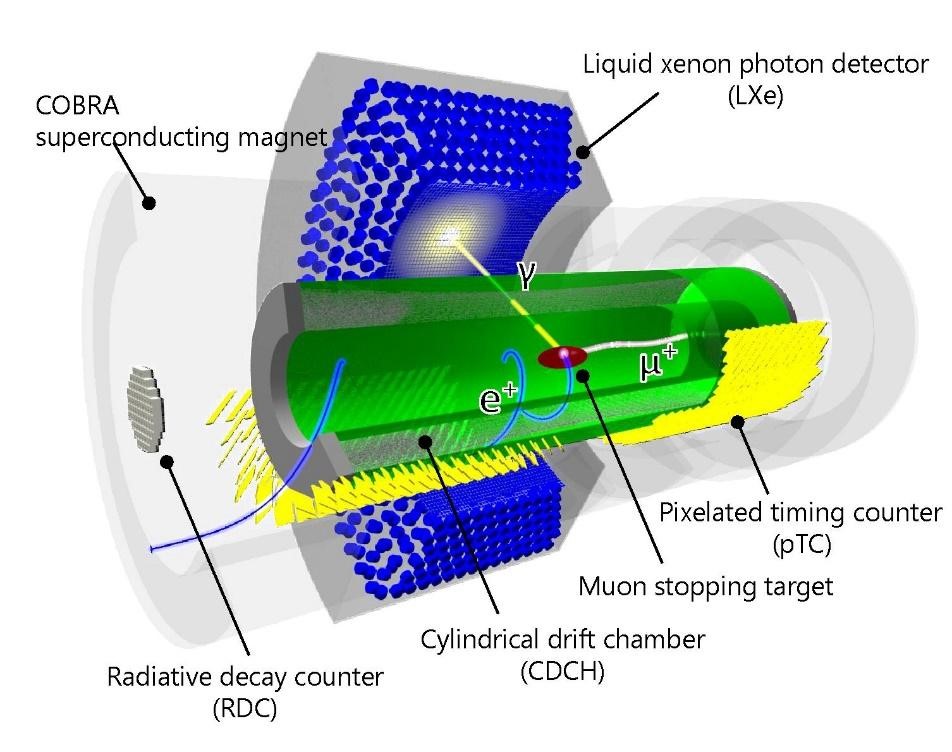Data Taking at the Upgraded Facility of the MEG II Experiment Is Underway
The MEG II experiment with muon beams is being conducted at the Paul Scherrer Institute (PSI) not far from Zürich (Switzerland). MEG II is the second stage of the MEG experiment which finished data acquisition in 2013. The MEG experiment was aimed at the search for neutrinoless decay of the positively charged muon into a positron and a gamma-quantum. This process is highly sensitive to manifestations of New Physics – within the Standard Model, it is impossible at the levels of tree diagrams and hardly probable (less ) due to loop diagrams with allowance for lepton mixing.


N. A. Kuchinsky and A. Kolesnikov discussing the matter. Photo from the author’s personal archive
At the same time, several theories beyond the Standard Model, such as supersymmetry, the Great Unification, the theories with extra dimensions, and the models with heavy right-handed neutrinos, predict a relative probability of the decays like in the range between and . These values can well be reached at modern setups and prove the relevance of MEG and other experiments at low and intermediate energies which supplement the direct search for New Physics at high-energy accelerators.
The search for the decay in cosmic rays started in pioneering experiments of B. Pontecorvo and E. Hincks more than sixty years ago, which became extremely relevant after the discovery of neutrino oscillations. The strongest constraint on the relative probability of the decay was set at the first stage of the MEG experiment in 2009−2013 (BR () < ), which improved the previous result by the factor of 20.
In 2015−2021, the MEG facility was upgraded. The second stage of the experiment is named MEG II (see Figure 1). During the upgrade, a new tracker based on the cylindrical drift chamber with a small amount of material was manufactured, parameters of the liquid-xenon electromagnetic calorimeter were substantially improved (photomultipliers were replaced with a Multipixel Photon Counter), a highly segmented time counter was installed, and all the readout electronics were revamped.
In 2021, the engineering run was performed at the MEG II facility. In June 2022, the first half-year physics run of data taking was started. The staff of the Experimental Department of Multiple Hadronic Processes (EDMHP of DLNP) N. A. Kuchinsky, N. V. Khomutov, K. G. Afanasyev, A. O. Kolesnikov, V. A. Krylov, V. L. Malyshev, A. M. Rozhdestvensky are taking an active part in the run which is being conducted mainly in a distant mode due to a high level of automation of the experiment.
It is expected that in 3 years the MEG II experiment will accumulate statistics which allows elevating the experiment sensitivity to the relative probability of the decay almost by an order of magnitude, up to the level of .

Figure 1. Configuration of MEG II detectors
Aleksandr Kolesnikov,
a junior research scientist of EDMHP of DLNP

